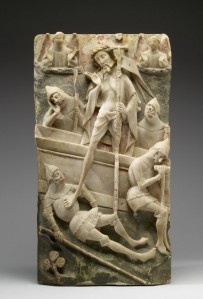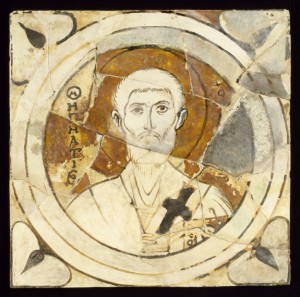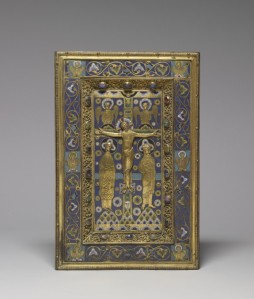This diptych, created by a French artist between the years 1350-1365, is made out of ivory and bone. Thirteen scenes from the Passion of Christ can be found within these two panels, which were commonly used by the rich to pray. This work of art fits within the medieval time period, and the Romanesque, as well. The pilgrimage will take its followers on a very long journey all over and something like a diptych is a great aid in praying while on the move. The significance of this work of art lies within the thirteen scenes from the Passion of Christ that can be the wealthy people’s guide to salvation.










